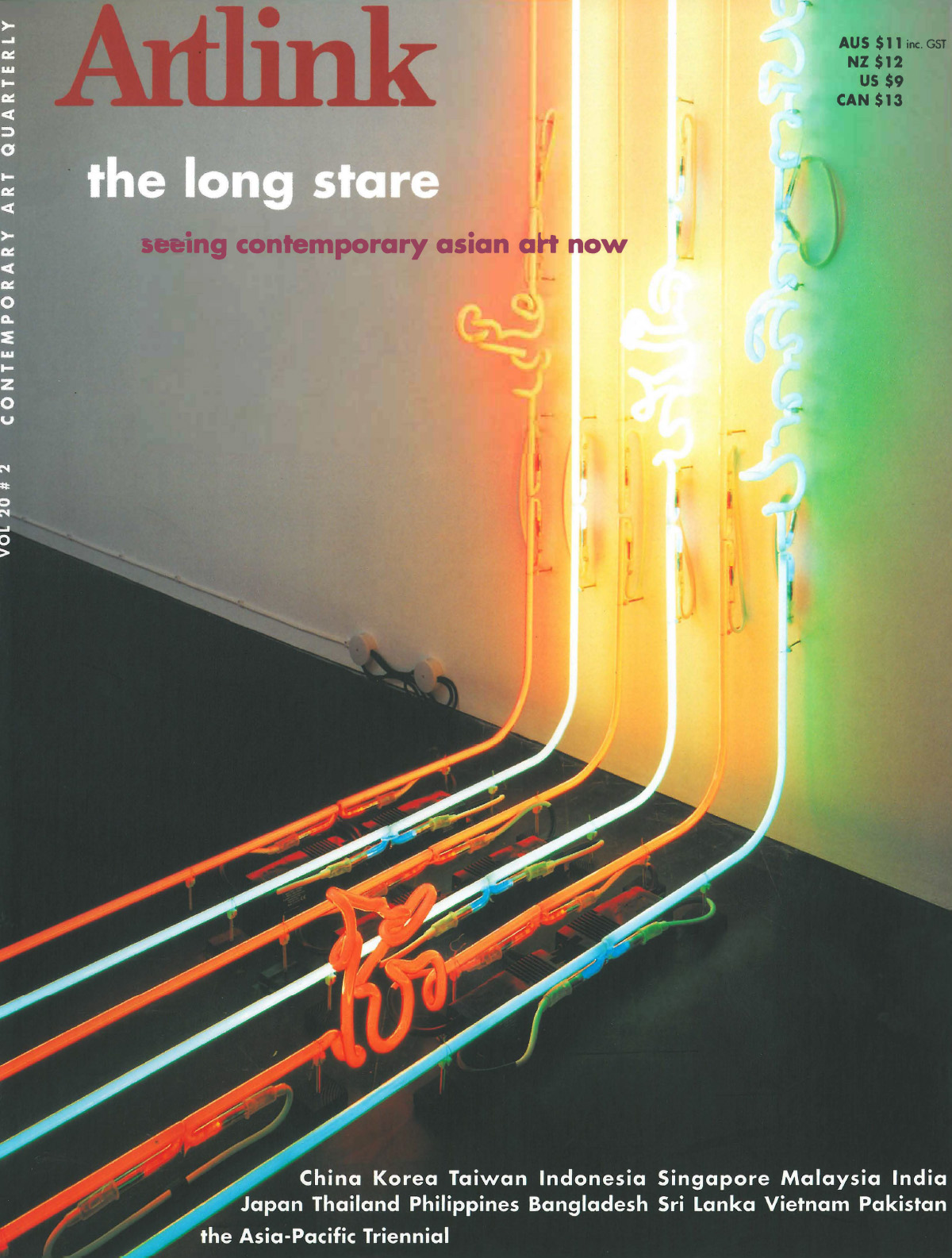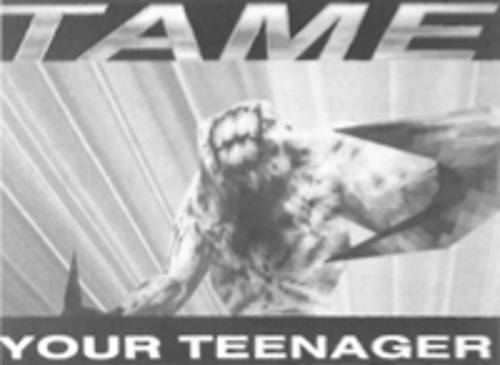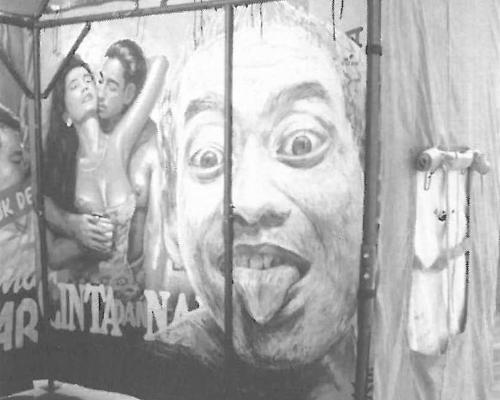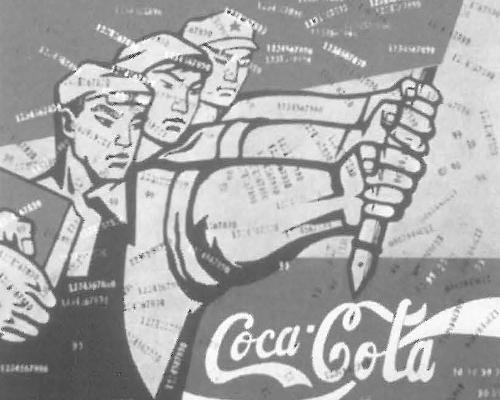Search
You searched for contributors, issues and articles tagged with Asia Pacific ...
Contributors
Artlink
Akiko Miki
Alison Carroll
Angela Valamanesh
Anne Kirker
Annette Pederson
Araya Rasdjarmrearnsook
Caroline Turner
Deborah Hart
Dionissia Giakoumi
Donald Brook
Dwi Marianto
Edwina Bartleme
Flaudette May V. Datuin
Jennifer Livett
Joanna Mendelssohn
Kajri Jain
Kim Machan
Larissa Hjorth
Lee Weng Choy
Louise Hamby
Masahiro Ushiroshoji
Maud Girard-Geslan
Morris Low
Neil Manton
Nicholas Jose
Oscar Ho Hing Kay
Pat Hoffie
Rifky Effendy
Robyn Taylor
Russell Trood
Salimi Hashmi
Sang Ye
Sean Kelly
Sharmini Pereira
Soyeon Ahn
Stephanie Britton
Stephanie Radok
Suhanya Raffel
Vivonne Thwaites
Zanita Anuar
Issues

The Long Stare: Seeing Contemporary Asian art Now
Issue 20:2 | June 2000
Articles

The Tate goes modern
The Tate Modern opened in May 2000 to great fanfare and applause. The refurbished power station on the Thames now houses the international post-1900 art of the Tate collection. The public has rushed to visit with huge crowds enjoying the experience, but putting pressure on the facility. Critics have questioned the way the work has been arranged by theme rather than by school, chronology or geography.

Australia and Asia: Friends and Family
The past 10 years have seen the building of ties between Australians and Asians through the interactions occasioned by the three Asia-Pacific Triennial exhibitions in Brisbane. There are now many personal and binding friendships across the region which did not exist before. This changes our concept of 'region' significantly.

Geography, Indigeneity and Dissonance
Some of the many complex questions raised by the Asia-Pacific Triennials relate to where artists originate from, how they relate to indigenous issues of their country, and the possibility of dissonant voices being heard through the exhibition which would not be tolerated in their country of origin. This is increasingly important in an Australian political climate which has downplayed our relations with the Asian region.

Myths and Histories: A Vietnamese Story
The inside story of the first selection of a Vietnamese artist for the Asia-Pacific Triennial. Vietnamese artists in the early 1990s were free to make art of their choice, as the grip of state-run culture began to relax. The significance of the resulting elegiac romantic paintings was lost on some critics of the Triennial who did not appreciate this history. The curatorial structuring of the Triennial helped to go beyond the official line of ministries of culture.

Asian Engagements: Tubes of Bamboo
In this brief article Turner focuses on the Queensland Art Gallerys Asia-Pacific Triennial. From the beginning, the Asia-Pacific Triennial was conceived as more than an art exhibition. It was equally about creating a network of contacts with artists and art institutions, a research base and permanent collection of contemporary Asian art and a forum for discussion of the art of the region. Artists discussed include Geeta Kapur, Marian Pastor Roces, Xu Bing, Santiago Bose, John Frank Sabado and Dadang Christanto.

Dragon seeds and flea circuses: some moments and movements in contemporary Chinese art
Post-revolutionary China was a time of testing boundaries of official tolerance and experimentation with the newly accessible Western art ideas. The first art exhibitions were held and groups formed, as artists started to realise they were not, as Mao said, just the hair on the skin of socialism. Resistance to the old political order and a deliberate courting of Western buyers with post-Mao imagery has to give way to finding an original voice.

My Hands are tied
Performance/Installation by Brigita Ozolins Foyer Installation Space, Hobart 10 - 25 March 2000

Kimono as Canvas
Gallery East or 2000 Perth International Arts Festival 12 February - 5 March and touring for two years

25 Songs on 25 Lines or Words on Art Statement for Seven Voices and Dance...
Joe Felber, Elliot Gyger and Lucy Guerin University of South Australia Art Museum 6 April - 6 May 2000

Polemic: Why did they Cancel Sensation?
Brook discusses what he believes to be the two main problems with the cancellation of the Sensation exhibition at the National Gallery - to locate the issue and to restore some gravity, so that instead of the noise increasing with distance from the issue, it diminishes. The key figure discussed is the Director of the NGA, Dr Kennedy with the notion of Quality dominating the content of the article.

Beyond Language
Although often disguised as an innocent communication tool, language is defined, and, in turn, defines the parameters of all aspects of life, from the most personal and private to socio-political conditions and power structures. Giakoumi discusses this fact in relation to artist's experiences of living and working in countries where language barriers are apparent. Four works by artists Shigeaki Iwai, Xu Bing, Kim Young-Jin and Lee Mingwei are closely examined through this text.

The Arts of Diplomacy
Manton looks at the relationship between the Department of Foreign Affairs and Trade and the art world in Australia, one that seems to have been difficult, particularly since the 1970s when the Commonwealth Art Advisory Board gave way to a National Gallery and an Australian Council for the Arts. Furthermore this text examines the growing relations between Australian and Asian art communities during the second half of the 20th century.

Expanding Horizons: Art from Taiwan
This article looks at the recent history of cultural exchange between Australia and Taiwan and briefly examines the background of the shifts occuring within the Taiwanese art scene from an Australian context. Furthermore it examines some of the continuities and changes in the late 1990s with a particular emphasis on the works by artists Wu Tien-Chang and Wu Mali included in the Second and Third Asia-Pacific Triennial.

Korean Contemporary Art in the 1990s
Korean art in the nineties experienced an era of unprecedented freedom and a remarkable upsurge in visual expression. Ahn looks at the progression of Korean art and politics during the later years of the 20th century and at a few of the central art figures: Kim Myung-hye, Choi Jeong-hwa, Kim Jun, Kim Soo-ja, Han Myung-Ok, Choi Jae-eun, Kim Young-jin and Lee Bul.

Radicalising Tradition: Painting in Pakistan
The teaching of miniature painting has, since the 1980s when it became a part of the National College of Arts (NCA) in Lahore, become a highly respected and important traditional genre. The role of miniature painting also came to represent many of the anxieties that entangled this postcolonial society in search of its own identity. Hashmi examines the importance of this artistic form with reference to the works of Nahid Fakhruddin, Shahzia Sikander, Imran Qureshi, Tanzeen Qayyum, Talha Rathore, Aisha Khalid and Nusra Latif.

Shifts and Transitions in Indonesian Art and Society
This article looks at the East Timor crisis and the attempted boycott of the APT 3 at the Queensland Art Gallery subsequent to Indonesian artists participating in the event. Marianto examines this in relation to the shifting powers in Indonesia at the time from the ruling of President Habibie to the fourth leader Abdurrahman Wahid (Gus Dur) and presents a list of what could be considered seven strands of artistic concern within Indonesia: The critical group, alternative art, art for art's sake, conventional art, marginalised individuals, media-influenced art and feminist artists.

The Enigma of Japanese Contemporary Art
Japanese culture at the end of the twentieth century was at an intersection of past, present and future. Exhibitions including Against Nature at the Grey Art Gallery in New York (1989), Japanese Ways, Western Means at the Queensland Art Gallery in Brisbane (1989), A cabinet of Signs at the Tate Gallery Liverpool (1991) and Zones of Love at the MCA Sydney (1991) showed for the first time the complex and urban basis of Japanese art in the 1980s, a time of considerable transition in Japanese art practice. Featured artists included Shigeo Toya, Kimio Tsuchiya, Yasamasa Morimura, Takashi Murakami, Emiko Kasahara, Masato Nakamura, Yukinori Yanagi, Katsushige Nakahashi and Tatsuo Miyajima.

Modern Asian Art
John Clark, Sydney: Craftsman House, 1998,
344 pp., 48 colour plates, hardcover, ISBN 90-5704-04-17, $85
344 pp., 48 colour plates, hardcover, ISBN 90-5704-04-17, $85

Anxious Nation: Australia and the Rise of Asia 1859-1939
David Walker, University of Queensland Press, 1999, 312pp, paperback RRP $29.95

Cheo Chai-Hiang Thoughts and Processes (Rethinking The Singapore River)
Cecily Briggs, Singapore art Museum & Nanyang Academy of Fine Art, 2000, 132pp RRP $40
























